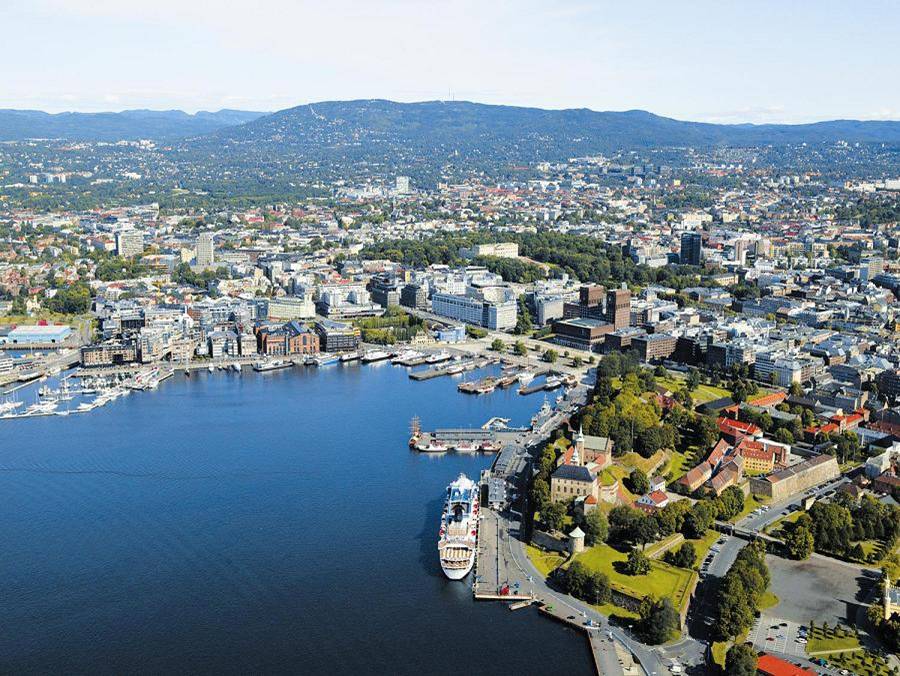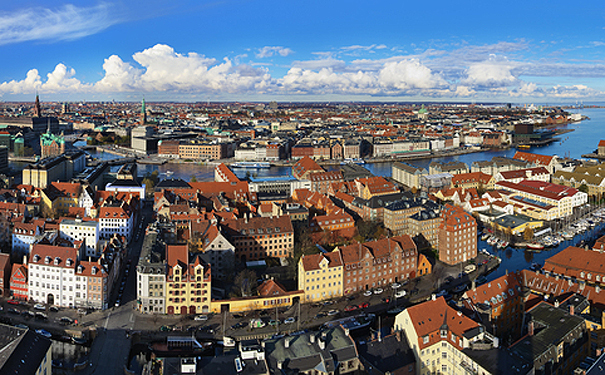Saturday, 04/05/2024 | 03:36 GMT+7
VANCOUVER, CANADA
Consistently performing well in worldwide “livable city” rankings, Vancouver has an ambitious goal of becoming the “the greenest city in the world” by 2020. They already lead the world in hydroelectric power—making up 90 percent of its supply—as well as regularly tapping into renewables like wind, solar, and wave power.

Thanks to mass transit, bike lanes (248 miles worth), ride sharing programs, and greenways, Vancouver has the lowest per capita carbon emissions of any major city on the continent.
As part of their 2020 goals, they aim to decrease emissions an additional 33 percent, while also enacting strict green building codes (all new developments must be carbon neutral) and improving the energy efficiency of existing structures by 20 percent.
One area where Vancouver could improve is in their use of electric vehicles. The Vancouver Electric Vehicle Association estimates there are only 20 pure electric vehicles on city roads. This is largely due to availability, with the Chevy Volt only just released in Canada and the Nissan Leaf expected later this fall. While there are only 15 charging stations currently planned, city officials are planning more for the future and expect EVs to account for 15 percent of new vehicle sales in Vancouver by 2020.
SAN FRANCISCO, U.S.
Atop the ever-shifting throne of green North American cities sits San Francisco, one of the most densely populated metropolitan areas in the U.S. High marks for air quality, waste management, and commitment to eco-friendly commuting options continue to separate San Fran from its counterparts.

“Why do we do all this?” former Mayor Gavin Newsom said in a 2008 interview. “Because it’s the right thing to do. We’re consistently among the top travel destinations in the world. We think people are attracted to the values of this city.”
The metropolis—which was recently ranked as the number one green city in North America—recycles 77 percent of its waste, reserves nearly 20 percent of its land to green spaces, and has more than 497 LEED-certified green building projects.
On the auto front, San Francisco is considered the electric vehicle capital of the U.S., with over 160 public charging stations and plans to install an additional 2,750. An innovative “battery-swapping” station is also planned for mid-2012 to service a 60-car EV taxi fleet. It’s estimated that the city will have over 1,000 EVs and 5,000 plug-in hybrid vehicles by the end of 2012.
OSLO, NORWAY
With more than two-thirds of its municipality covered in protected forest, waterways, and agriculture land, it’s no surprise that Oslo is one of Europe’s leading sustainable cities. Examples of pioneering practices include intelligent lighting that adjusts intensity depending on traffic conditions and weather, bio-methane from waste to power mass transit and heating, and an “eco-certification” program that involves all 43,000 employees of the city.

By 2030, Oslo aims to cut carbon emissions by 50 percent—Norway as a whole plans to be carbon neutral by 2050—and is targeting its transportation sector for the greatest gains.
Car and bike sharing programs are in place (including a hugely successful EV sharing fleet), and 400 charging stations have been installed downtown. Already, over 1,700 EVs grace Oslo’s roads, all receiving free parking, toll immunity, and access to lanes generally reserved for public transport.
The city’s heating system is currently powered by 80 percent renewable energy, mainly from biomass from residual waste. This relationship annually saves the carbon emissions equivalent to 60,000 vehicles. Within the next decade, Oslo plans on expanding the system to reach 100 percent renewable sources for heating.
CURITIBA, BRAZIL
Named by Reader’s Digest as the “Best Place to Live in Brazil,” Curitiba is regularly commended for its sustainability and conservation efforts. Back in the early 1970s, the city set out to develop a long-term urban plan that would not only accommodate future growth, but also encourage green spaces and a clean environment. Only non-polluters were invited to resign within its limits and public transport was efficiently divided into concentric circles within commercial corridors.

Where there was once only one square meter of green space per person, now there is more than 52. Over 1.5 million trees have been planted along city streets and a network of 28 parks and forests developed. Some 2.3 million people a day use Curitiba’s inexpensive and fast transit service—a model of efficiency adopted by other cities including Los Angeles and Bogota, Colombia.
Ninety percent of residents recycle two-thirds of their garbage daily and the city has even come up with an innovative program that allows people to exchange trash for transit tokens or fresh produce. This has greatly minimized litter and waste in even some of the poorer sections of Curitiba.
Said former Mayor Jamie Lerner: “There is no endeavor more noble than the attempt to achieve a collective dream. When a city accepts as a mandate its quality of life; when it respects the people who live in it; when it respects the environment; when it prepares for future generations, the people share the responsibility for that mandate, and this shared cause is the only way to achieve that collective dream.”
COPENHAGEN, DENMARK
Copenhagen, site of 2009’s climate change talks, is a shining green jewel as Denmark’s capital city. Like to bike? You’ll be in good company—as more than a third of the city’s 1.2 million people regularly cycle to work via more than 217 miles of dedicated bike lanes. Officials hope to get 50 percent of the population on two wheels by 2015 by closing down some major roads to cars and developing an additional 43 miles of bike lanes.

Besides having the largest wind turbine industry in the world, Denmark also leads in wind production—supplying roughly 19 percent of the country’s power needs. A new offshore wind farm planned for 2013 (featuring 111 turbines) will supply an additional four percent.
As part of their goal to be the world’s first carbon neutral capital by 2025, city officials have instituted a mandatory green roof policy, requiring all new developments to incorporate some level of vegetation into their building designs. In addition, “pocket parks” (half the size of a soccer field) are being installed around Copenhagen so that by 2015, 90 percent of all residents will be able to walk to a green space in less than 15 minutes.
Truong Duy








.jpg?w=367&h=206&mode=crop) Energy efficiency and conservation usage is an important aspect of the national energy development strategy
05/03/2024
Energy efficiency and conservation usage is an important aspect of the national energy development strategy
05/03/2024
 Challenges and Opportunities to promote energy efficiency market in Vietnam
Challenges and Opportunities to promote energy efficiency market in Vietnam
 The Ministry of Industry and Trade requests government agencies to coordinate in organizing Earth Hour 2024
The Ministry of Industry and Trade requests government agencies to coordinate in organizing Earth Hour 2024
 Consultation on Energy Efficiency Boiler Catalogue and Wood Drying Guideline
Consultation on Energy Efficiency Boiler Catalogue and Wood Drying Guideline
 Son Ha Co., Ltd, applies energy efficiency and conservation measures
Son Ha Co., Ltd, applies energy efficiency and conservation measures
.png?w=367&h=206&mode=crop) Request for expression of interest - C2.1.13: Capacity Building on energy efficiency policies development
Request for expression of interest - C2.1.13: Capacity Building on energy efficiency policies development
 Phuc Kien Co., Ltd., is effectively implementing energy-saving measures
Phuc Kien Co., Ltd., is effectively implementing energy-saving measures
 Request for expression of interest - C2.1.12: Independent monitoring of safeguards implementation
Request for expression of interest - C2.1.12: Independent monitoring of safeguards implementation